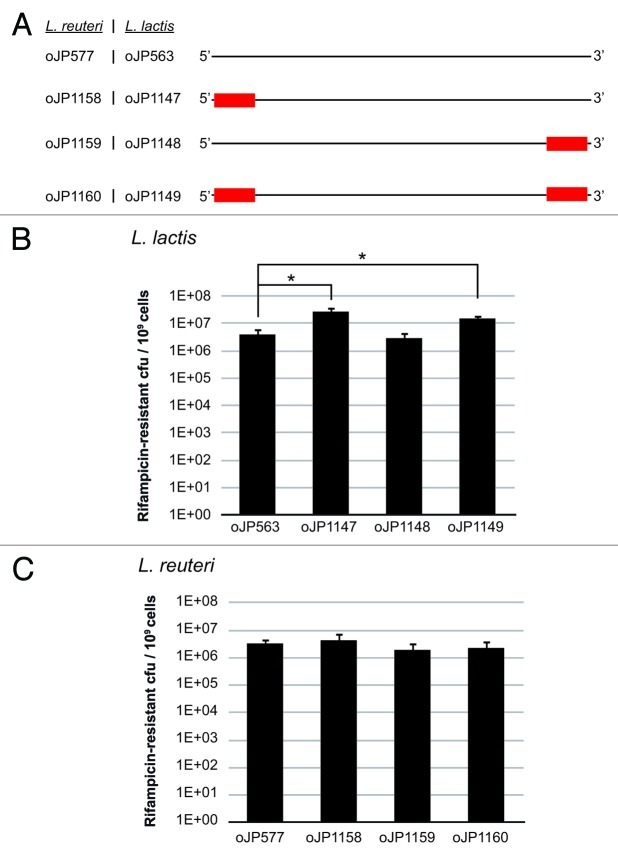Figure 2.
Increased ssDNA recombineering efficiency in L. lactis with oligonucleotides harboring phosphorothioate-linkages. (A) Schematic overview of the different phosphorothioate oligonucleotides (PTOs). The red rectangle indicates the presence of 5 PT linkages in the oligonucleotide at either the 5’-end, the 3’-end or at both proximal ends. The control oligonucleotide (listed on top) does not have any PT linkages. The two columns left of each oligonucleotide list the corresponding names for L. reuteri and L. lactis. The panel of oligonucleotides for L. reuteri or for L. lactis have the same nucleotide sequence and yield a rifampicin-resistant phenotype once incorporated in the chromosome. (B) Recombineering efficiencies in L. lactis transformed with 200 μg control oligonucleotide (oJP563) or 200 μg PTOs. Statistical significance (p < 0.05) is indicated with an asterisk between oJP563 and oJP1147, and oJP563 and oJP1149. All data presented are the averages of three independent experiments, and error bars represent standard deviation. (C) Recombineering efficiencies in L. reuteri transformed with 100 μg control oligonucleotide (oJP577) or 100 μg PTOs. Recombinants were expressed as the number of rifampicin-resistant colonies per 109 cells. All data presented are the averages of three independent experiments, and error bars represent standard deviation.

